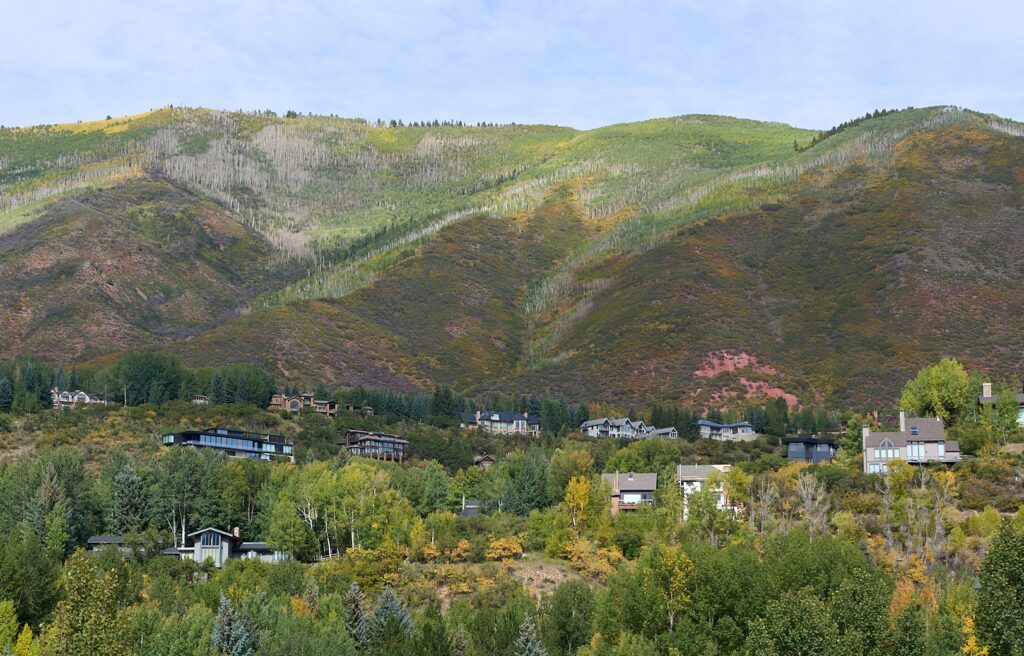Anatomy of a Prescribed Fire: Avalanche Creek – Filoha Meadows
ACES Staff
April 9, 2016
On April 4th, 2016, the White River National Forest, in partnership with Pitkin County OST, CO Parks & Wildlife, and Carbondale Fire, conducted a 500-acre prescribed fire on the slopes above Avalanche Creek Campground and Filoha Meadows. The burn targeted shrub, pinyon-juniper, aspen, and grassy vegetation in areas that provide critical habitat for bighorn sheep and other native wildlife. Following an extensive planning and monitoring process, a suitable burn window presented itself this spring.
The USFS invited ACES Forest Programs Director Jamie Werner along to document the burn in advance of the similar Hunter Creek Prescribed Fire, also slated for this spring. The White River National forest is partnering with ACES, Pitkin County, the City of Aspen, Wilderness Workshop, and Aspen Fire on that effort, which will improve wildlife habitat and reduce hazardous fuels in Aspen’s wildland-urban interface.
In addition to providing a general overview of day-of operations for this prescribed fire, the following serves as an example of what may be expected during the Hunter Creek Prescribed Fire.
 |
 |
Following an initial scouting flight, a device called a Plastic Sphere Dispenser was mounted to the side of the helicopter. The dispenser is filled with ping pong-like balls, called plastic spheres, which are incendiary devices used to start fires from the air. The potassium permanganate-filled spheres are stored in a hopper at the top of the dispenser before moving into a tube where a needle injects them with a water-glycol solution similar to antifreeze. The chemical mixture makes the spheres combustible, and varying the proportions of the chemicals allows control of the amount of time it takes for a sphere to ignite. The number of spheres dropped helps determine the intensity of the burn. This is both an efficient and safe way to ignite a prescribed fire.
 |
 |
Once the helicopter was airborne, the burn boss communicated with the pilot and ignition boss via radio from on the ground. Engines and ground personnel were stationed at Avalanche Campground on the toe of the slope to control the spread of fire using hand tools, water, and backburning vegetation near land features. The helicopter initially dropped a line of plastic spheres toward the top of the ridge as a test fire to observe fire behavior and smoke dispersal.
 |
 |
With both fire and smoke behaving as desired, the helicopter gradually worked its way down the slope, traversing and dropping lines of plastic spheres. The operation progresses from the top down because fire moves uphill. By gradually putting fire lower on the hill it limits the spread of the fire to small sections immediately above the ignition zone. The fire is stopped on the uphill side by the previously burned section. Natural barriers, such as moisture-holding drainages, and previously hand-cut or black-lined firebreaks prevent lateral spread of the fire.
 |
 |
Ignition operations then moved over to the slopes above Filoha Meadows, across from Penny Hot Springs. As before, an initial line of plastic spheres was distributed along the top of the ridge to test fire behavior and smoke dispersal. Note the blackline to the left of the ignition zone.
 |
 |
This next unit contained more pinyon-juniper trees than the previous unit, which was mostly brush. When the trees burned, they would briefly flare up, exhibiting taller flame lengths and producing darker smoke. These flare ups only lasted a few minutes and would subside once the tree was consumed.
 |
 |
The prescribed fire operation proceeded down the slope in a similar fashion as before. Engines, UTVs, and hand crews patrolled the edge of the unit at the bottom of the slope. Due to a steep rocky terrain feature partway down the slope, crews hand-lit the lower left section of the unit, visible in the photo on the right above. By late afternoon, after a few hours, all ignition operations were complete. The fire continues to be closely monitored, and the wet storm system expected to move in this weekend will help cool any hot spots remaining within the burn area.
Fire personnel reported that the operation was successful; there were no safety mishaps, operations were done within prescription, wildlife objectives were met, and the weather cooperated as planned. The fire is expected to improve future vegetation conditions for bighorn sheep and other native wildlife by stimulating brush and aspen regeneration, returning nutrients to the soil, and reducing the encroachment of young pinyon-juniper vegetation, which can camouflage predators of bighorn sheep and elk.
View the complete slide show of the Avalanche Creek burn here.
Learn more about the upcoming Hunter Creek Prescribed Fire here.
~ Jamie Werner, Forest Programs Director
Thanks to the White River National Forest personnel for the invitation to view this fire ahead of the Hunter Creek burn.
Special thanks also goes to USFS Wildlife Biologist Phil Nyland for lending his technical expertise to this piece.
Related Content

RFV Phenology: Green is out, yellow is in! Or is it?
Learn More
ACES // City of Aspen Open Space Birding: Marolt Open Space 9/5/2024
Learn More